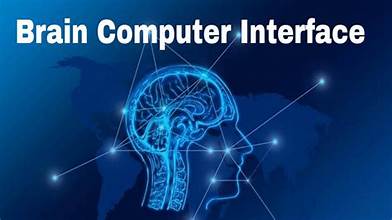Regulating Brain-Computer Interfaces
In the ever-evolving landscape of medical technologies, few frontiers are as promising and, simultaneously, as ethically complex as Brain-Computer Interfaces (BCIs). BCIs hold the potential to revolutionize the way we interact with technology, enabling direct communication between the human brain and computers. As these technologies advance, it becomes imperative to establish robust regulatory frameworks to ensure their ethical development and use. In this blog, we delve into the need for regulations surrounding BCIs, the current state of affairs, and potential pathways to navigate the ethical challenges associated with this groundbreaking technology.
The Promise of Brain-Computer Interfaces:
BCIs offer a myriad of possibilities, from restoring lost functions in individuals with disabilities to enhancing cognitive capabilities in healthy individuals. Imagine a world where paralysis is no longer an insurmountable obstacle, and people can control devices or communicate through mere thoughts. While the potential benefits are awe-inspiring, the ethical considerations surrounding BCIs are equally profound.
Ethical Considerations:
- Privacy Concerns: BCIs involve the direct interface with the human brain, raising significant concerns about the privacy of individuals’ neural data. Regulations must address how this highly personal information is collected, stored, and used to prevent unauthorized access or misuse.
- Informed Consent: As BCIs may involve invasive procedures or significant alterations to brain function, obtaining informed consent becomes paramount. Regulations should establish clear guidelines on how to communicate the risks and benefits of BCI technologies to ensure individuals make well-informed decisions about their use.
- Equity and Accessibility: Ensuring equitable access to BCIs is crucial to prevent exacerbating existing social and economic disparities. Regulatory frameworks should address issues of affordability, accessibility, and the potential for exacerbating inequalities.
- Security and Hacking Risks: The direct connection between the brain and computers introduces new cybersecurity challenges. Regulations must mandate robust security measures to safeguard against unauthorized access, data breaches, or even potential malicious manipulation of neural signals.

Current Regulatory Landscape:
As of now, the regulatory landscape for BCIs is relatively nascent, with existing regulations primarily focused on medical devices and invasive procedures. For instance, the U.S. Food and Drug Administration (FDA) oversees the approval of medical devices, including certain BCIs intended for therapeutic use. However, the rapid pace of BCI development has outpaced regulatory frameworks, necessitating a more comprehensive approach.
The Need for Comprehensive Regulation:
- Multi-disciplinary Collaboration: Regulating BCIs requires collaboration across diverse fields, including neuroscience, bioethics, law, and technology. Governments, regulatory bodies, and industry leaders must work together to create a comprehensive framework that addresses the multifaceted challenges posed by BCIs.
- Adaptive Regulations: Given the dynamic nature of BCI technology, regulations should be adaptive and capable of evolving alongside technological advancements. This may involve establishing regulatory bodies with the expertise to assess and respond to emerging BCI developments.
- International Standards: BCIs are not confined by national borders, and international collaboration is essential. Establishing global standards for the development, testing, and deployment of BCIs can ensure consistency and facilitate ethical practices worldwide.
- Ethics Review Boards: Incorporating ethics review boards into the regulatory process can provide an additional layer of oversight. These boards could assess the ethical implications of BCI research and applications, helping guide regulatory decisions.

The Role of Public Engagement:
In shaping BCI regulations, involving the public in the decision-making process is crucial. Public engagement can provide diverse perspectives, ensuring that regulations align with societal values and concerns. Town hall meetings, surveys, and participatory forums can serve as platforms for fostering dialogue and gathering input from a broad range of stakeholders.
Conclusion:
As we stand on the cusp of a new era in human-computer interaction, the ethical dimensions of BCIs demand our careful attention. Regulating these transformative technologies requires a delicate balance between fostering innovation and safeguarding fundamental ethical principles. By developing adaptive, comprehensive, and internationally collaborative regulatory frameworks, we can navigate the ethical seas of BCI development, ensuring a future where these technologies enhance human lives responsibly and ethically.